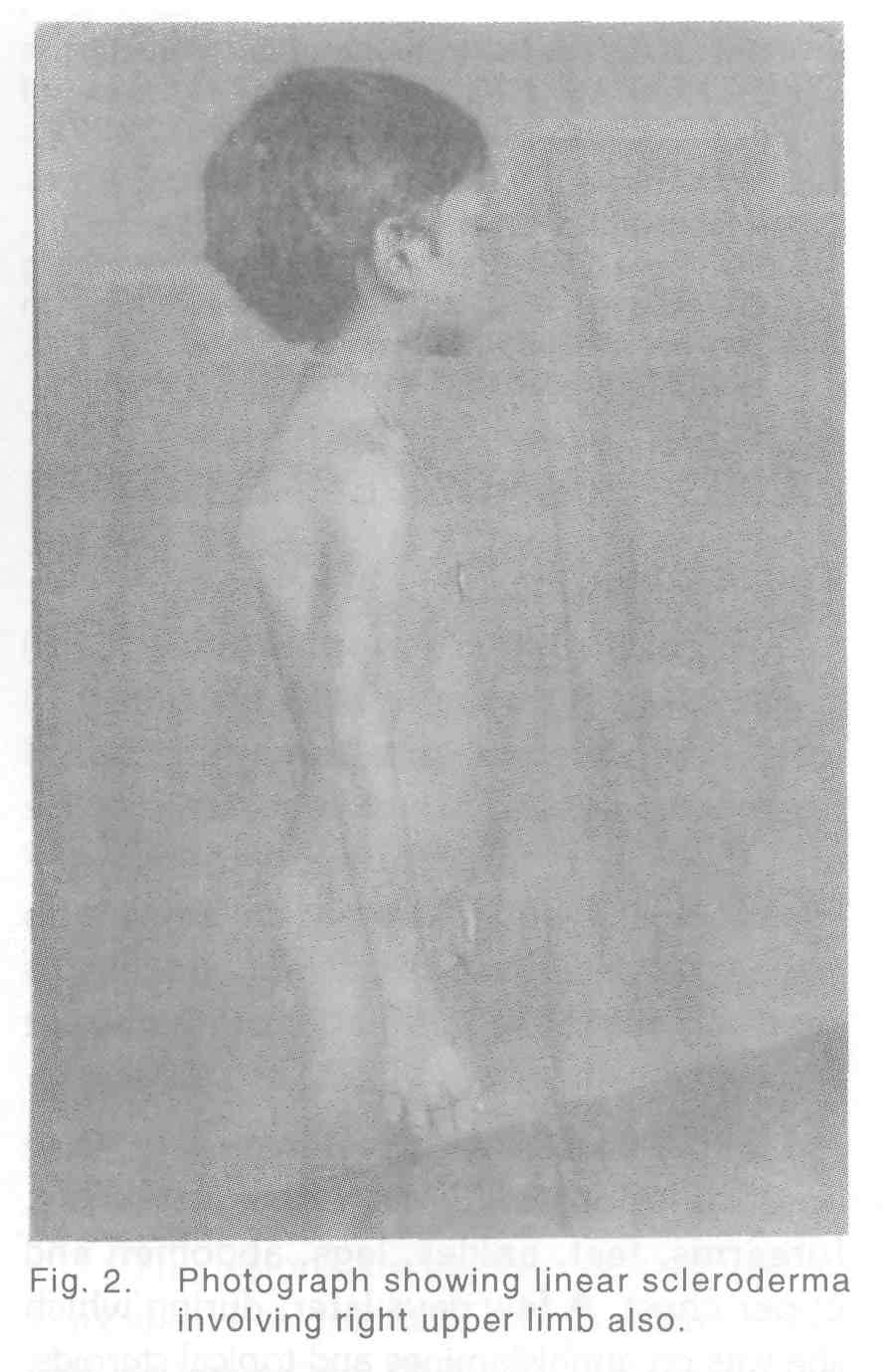Translate this page into:
Linear scleroderma with bilateral lesions, contractures and kyphoscoliosis
Correspondence Address:
J N Dave
Ahmedabad
India
| How to cite this article: Dave J N, Shah S V, Ghosh A, Cardoso B J, Goel R. Linear scleroderma with bilateral lesions, contractures and kyphoscoliosis. Indian J Dermatol Venereol Leprol 1997;63:66-68 |
 |
 |
 |
 |
To the Editor,
Linear scleroderma is a localised form of scleroderma, beginning below the age of 10 years, usually with single and unilateral lesion although bilateral lesions occur occasionally. [1,2] Underlying muscles and even bone may sometimes be involved resulting in growth distrubances and flexion deformities.
An 8-year-old boy presented with pigmented, shiny, taut skin lesions predominantly involving the left side of the body and flexion contractures involving the left elbow and wrist joint and spindling of left hand fingers. Skin lesions had started 3 years back from left anterior part of chest involving 6th, 7th and 8th intercostal spaces with sharp midline cut-off. Later on the left clavicular region, left upper limb including the fingers and left lower limb sparing the knee joint and toes were involved [Figure - 1]. The right upper limb lesions appeared last [Figure - 2]. The face, scalp, abdomen, back and buttocks including the right half of the body were spared. Wasting was seen in the region of the left hand and forearm along with that of both upper arms. There was no history of Raynaud′s phenomenon, dysphagia, fever or joint pain. Muscle power of left upper limb could not be tested properly because of contractures but EMG studies were normal. Routine haemogram and urinalysis were within normal limits. LE cell test and rheumatoid factor were negative. X-ray of the spine confirmed the clinical diagnosis of kyphosis and right sided scoliosis but X-rays of other sites were normal. Histology of the skin was suggestive of scleroderma.
Although linear scleroderma involving the upper and lower limbs are usually homolateral, [1,2] in our case the right upper limb was involved too. Associated vertebral column defects including kyphosis and scoliosis have been mentioned in the literature although spina bifida occulta is the commonest. [1,2] The child has to be followed to see the outcome of his disease.
| 1. |
Rowell NR, Goodfield MJD. The connective tissue diseases. In : Champion RH, Burton JL, Ebling FJG, editors. Textbook of dermatology. London : Blackwell, 1992:2225-33.
[Google Scholar]
|
| 2. |
Rosenwasser TA, Eisen AZ. Scleroderma. In : Fitzpatrick TB, Eisen AZ, Wolff K, Freedberg IM, Austen KF, editors. Dermatology in general medicine. New York : McGraw-Hill, 1993:2156-67.
[Google Scholar]
|





